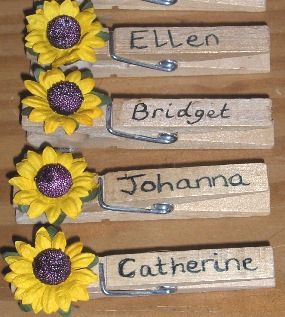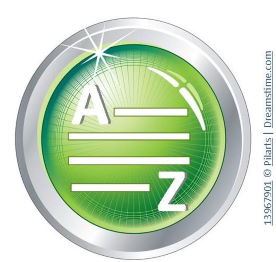- Home ›
- Irish Names ›
- Irish first names in 1864
Irish first names in 1864
Which first names were parents in Ireland choosing for their new-borns in 1864?
Irish first names had become pretty predicatable by 1864, the year Ireland introduced a mandatory system for the civil registration of births.
 Popular Irish first names of girls in 1864
Popular Irish first names of girls in 1864By this time, English was the language of the majority (less than 25% still spoke Irish) and all the stirring Celtic names of Old Ireland had been swept away in favour of anglicised names, especially those of saints.
Historic studies suggest this was because some religious groups refused baptism to a child unless it was taking the name of a saint. Ireland has a vast number of saints and their names are repeated over and over, so it is no wonder that the selection of names given to infants followed the same pattern.
Where do these statistics come from?
While modern trends in Irish first names have been published every year since the mid-1990s, I haven't come across any similar enquiry into mid-19th century Christian names in Ireland.
So I searched the state-managed online database of civil registration records (irishgenealogy.ie) for all the registered births in 1864 where the child received one of 40 traditional Irish names. Prior to this I'd made a rough list of 40 boys' and 40 girls' names from the GRO Indexes manuscripts for 1864.
From this exercise, I present my results below. The number beside each name gives the total count of entries for that name.
Where are the weird spellings?
What usually surprises people about the names chosen in Ireland in 1864 is how very anglicised they are. Where are the weird spellings for which the Irish language is so well known, the unfamiliar sounds and the foreign accent marks? These names are all so instantly recognisable, so solid, respectable and, well, ordinary, you might think.
That's because the English language had been forced upon the Irish, and names, both first names and surnames, were anglicised at every turn. And since the majority of adults in the middle of the 19th century were illiterate, the (mainly English) clerks who recorded their names in documents, forms and letters, 'translated' them into an English equivalent.
You might also notice that all the names are those of saints. This was pretty much mandatory if you wanted your new born to baptised, into any religion.
Let's hear it for the girls!
Among the most striking features of the top 10 girls' names is the proportion of babies given the name Mary. Statistically, from a total of 66,339 baby girls born in 1864, at least one in four was a Mary.
1864: Top 10 Irish first names for girls
1. Mary (17,082)
2. Katherine, Catherine, Kate (6,542)
3. Margaret/Peggy (6,459)
4. Bridget (4,937)
5. Ann, Anne, Anna (4,895)
6. Eliza, Elizabeth, Betty (4,269)
7. Ellen (3,987)
8. Sarah (2,061)
9. Hanora (1,627)
10. Johanna, Joan (1,328)
Among the most striking features of the top 10 girls' names is the proportion of babies given the name Mary.
Statistically, from a total of 66,339 baby girls born in 1864, at least one in four was a Mary.
1864: Top 10 Irish first names for girls
1. Mary (17,082)
2. Katherine, Catherine, Kate (6,542)
3. Margaret/Peggy (6,459)
4. Bridget (4,937)
5. Ann, Anne, Anna (4,895)
6. Eliza, Elizabeth, Betty (4,269)
7. Ellen (3,987)
8. Sarah (2,061)
9. Hanora (1,627)
10. Johanna, Joan (1,328)
A century later, in 1963, it was still the most popular Irish first name for newborn girls, but, with only one in eight female infants receiving it, the fall from favour had clearly begun.
In the last fifty-odd years, it has been on an almost continual slide down the popularity stakes for first names.
It still features highly, however, as a second name, on both sides of the border.
You can see how Mary fared in 2020 here.
And what about the lads?
The top names for boys show a much more spread out numerical pattern than those for girls. Of the 70,075 baby boys born across Ireland in 1864, fewer than one in six would have been called John, and only one in nine would have been a Patrick.
1864: Top 10 Irish first names for boys
1. John (11,812)
2. Patrick (7,695)
3. James (7,452)
4. Thomas (5,540)
5. Michael (5,508)
6. William (5,213)
7. Edward (1,745)
8. Joseph (1,535)
9. Daniel (1,330)
10. Peter (1,109)
But such was the popularity of the top six names, more than 60% of all the little lads born that year would have been called John, Patrick, James, Thomas, Michael or William.
Beyond those six names, the frequency of individual boys names dropped like a stone, as you can see from the top 10 list.
Beyond the top 10 were, in descending popularity order, Martin, Francis, Denis, Richard, Hugh, Timothy, David, Jeremiah and Mathew.
1864: Top 10 Irish first names for boys
1. John (11,812)
2. Patrick (7,695)
3. James (7,452)
4. Thomas (5,540)
5. Michael (5,508)
6. William (5,213)
7. Edward (1,745)
8. Joseph (1,535)
9. Daniel (1,330)
10. Peter (1,109)
John was still the most popular boy's name for new-borns in the Republic in 1963 and it wasn't until the 1980s that its popularity started to slip in the 1980s (in 1983 it was the fifth most popular name).
The slide then continued (it was down to 77th in 2020), while Jack, originally a pet name for John, has completely taken over.
Jack grabbed the top name for boys in the Republic in 2001, and after dipping for one year, regained his crown until 2014. Since then James has been top dog, but Jack is snapping at his heels in second place. In Northern Ireland in 2020, James and Jack held these same rankings.

